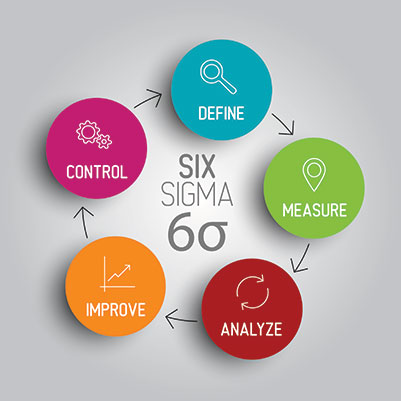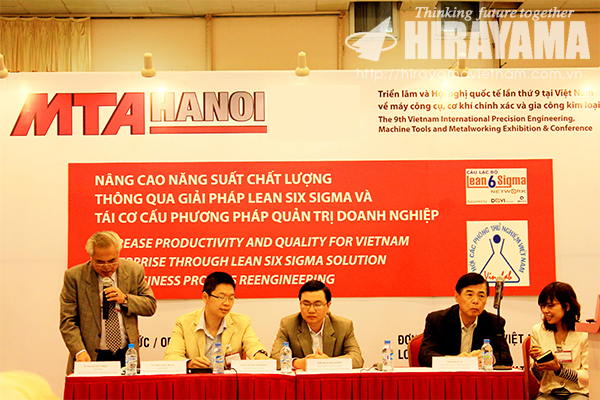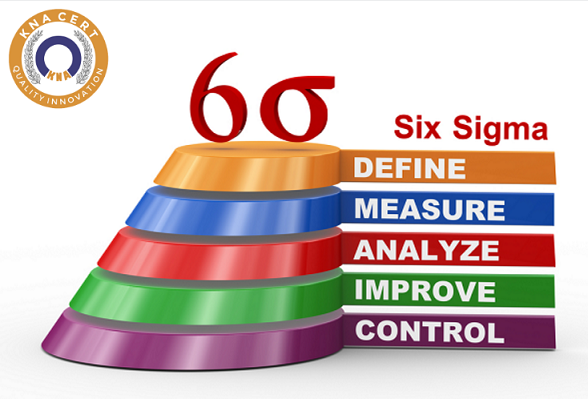
KNA COOPERATED WITH TUV AUSTRIA HELLAS ON AUDITING FSC STANDARDS IN VIETNAM
After time of exchanging and discussing, KNA CERT has successfully signed a cooperation agreement with TUV Austria on FSC/CoC certification services. Accordingl...
Lean 6 Sigma Model originates from Japanese innovation system. This model represents the combination of Lean and 6 Sigma method to bring double effectiveness to enterprises because they not only reduce faults but also get rid of two kinds of cost to the maximum at production stages.
KNA Cert shares some knowledge about Lean Six Sigma and its benefits of this model to Vietnamese enterprises.

Lean model is a production improvement method originating from Japan. When Toyota started a lean manufacturing approach to develop their business system in the 1960s with the name "TPS-Toyota Production System". The Lean application to the reality will help enterprises to get rid of unnecessary waste in the whole production, provide services, make activities streamlined and reduce time. Thanks to this model's appearance, Toyota has become an well-known automobile brand in the world with its reasonable cost and timely delivery.
This approach was started up in the 1980s by Motorola. Sigma appeared only after Lean method and mainly focused on implementing recognized quality management principles properly and effectively. From factors affecting work, Six Sigma mainly concentrated on fault improvement and minimization on products.

"Sigma in Greek refers to a statistical technique for assessing process error."
Sigma level achieved through the implementation of business processes will determine whether an enterprise operates effectively or not.
A firm will set a level of achievement from 1-6 Sigma. Enterprises usually set a level of achievement from 3-4 Sigma which is corresponding to the error probability of products about 66.897 to 6.210 per one million of products.
If any enterprise reachs 6 Sigma, they will minimize errors per one million of products ( about 3.4 errors )
6 Sigma has become a common trend and has been applied widely by great enterprises. Some examples of leading companies from Technology to Finance have successfully applied such as Asea Brown Boveri, Black and Decker, Dupont, Dow Chemical, etc.
The perfect combination between Lean and Six Sigma (LLS) helps enterprises to achieve their success.
The perfect combination among two management and improvement methods is considered as a new trend in choosing improvement methods and tools with the aim of maximizing capabilities of enterprises and meeting three important requirements of customers: competitive price, high quality and timely delivery.
Lean 6 Sigma helped thousands of companies both small-sized and big-sized ones to reach their full development and maintain their sustainable development such as GE, Xerox, Boeing, Samsung, LG,..
- Organizations, enterprises regardless of their fields desire to gain competitiveness in markets by improving production process, getting rid of the prodigality, shortening manufacture time and supplying services to raise product quality.
- Organizations, enterprises desire to improve the effectiveness in application of quality management system.

III. Mr. Hori Junji - Hirayama specialist (the right) at MTA conference are sharing Lean Six Sigma solutions.
- Production costs will be reduced considerably through prodigality and waiting time minimization.
- Production and service delivery time will be reduced. - Goods are delivered on time with the highest quality.
- Errors in production and supply are minimized. Reduce faulty products rate.
- The LLS application helps organizations to gain customer's satisfaction to create new products/ services with outstandingly added values on markets.
- LSS helps to establish a management system and tackle problems systematically with a view to helping key officials in organizations to apply approaches and LSS tools in the reality.

Lean Six Sigma is performed through DMAIC approach with 5 respective phases: Define (Xác định), Measure (Đo lường), Analyze (Phân tích), Improve (Cải tiến) and Control (Kiểm soát).
Each phase is determined by specific activities with appropriate tools in production. The centrality of 6 Sigma improvement is DMAIC. The following steps introduce problem-solving process in which specialized tools are manipulated to convert a realistic problem into statistical format, build up a measure through statistical model then convert in into a practical solution. Define (Xác định)
Determining issues, requirements and goals of project is the first step. Priority targets are key issues to connect company's business strategy with customer's requirements.
The output of specified stage: Projects will be run in Lean Six Sigma (current issues about the internal quality in organizations)
This step is to understand organization competence. There can be some steps.
- Measure labor productivity.
- Measure the ability to satisfy customer's requirements (deliver the order...)
- Measure errors in product creation. (7 quality management tools in production).
- Measure time (Lead time, Cycle time, Takt time, Waste time,..) to apply lean manufacturing more effectively.
- Establish production specifically - to find out bottlenecks - points in which production is stuck.
- Establish CTG (Critical to Quality) - are requirements of quality standards at stages in production.
- Measure the level of Sigma - shows manufacture competence of organizations.
This step helps to collect parameters to analyse hypotheses about the origin of oscillation in parameters created and then verify them later. Practical business issues are converted into statistical ones, including:
- Determine points which create added value and non-added value.
- Determine and clarity the origin of problems and stages of product creation.
- Specify points that lead to the jam in production then solve its problems.
This step allows us to use methods with specifically statistical tools to separate main factors to go into detail of causes that lead to errors.
- 5 Five Why's - use this tool to understand root causes of errors in a process or product and break down previous misconceptions about causes.
- Assess Descriptive Statistics, Histograms - this tool is used to confirm whethere gathered data characteristics are normal or abnormal with the aim of helping us to choose appropriately statistical analysis tools later.
- Correlation/ Regression/ Analysis - Determine the relationship between input factors in process and output results or the correlation among two groups of variable data.
- Main Effect Plot - Display main factors among researched factors.
- Analyze ANOVA variance analysis - this statistical reasoning tool is designed to check considerable differences among average values of two or more sample sets.
- Accomplish Failure Mode and Effect Analysis - Applying this tool in current process helps us to confirm proper improvement actions to prevent errors.
Hypothesis testing methods - This is a set of tests with the aim of investigating the origin of oscillation by using past or present data to provide objective answers for questions formerly addressed subjectively.
This step is to focus to the development of measures to get rid of the root cause of oscillation and verify to standardize solutions.
Applicable tools in this step:
- Cellular Layout
- Standard Work
- TPM - Total Productive Maintenance
- Changeover/ Setup Time
- Kanban
- Production balance
- Just In Time
- 5S method
This step helps to establish measurement parameters to maintain current results and address new problems simultaneously. This step covers:
- Accomplish measurement system.
- Verify the long-term capacity of process.
- Implement process supervision with a control plan to ensure that problems do not recur by continually monitoring involved processes.
- The most suitable tools in this step embrace:
- Control Plans (Kế hoạch Kiểm soát): This is a collection of documents with actions, implementation schedule and primary responsibility to control variable input factors with optimal operating modes.
- Process flow diagram with control landmarks: Covers a single diagram or a set of diagrams that visually represent new processes.
- Statistical Process Control (SPC): A set of diagrams helps to supvervise processes by displaying chronological data between the upper standard limit (USL) and lower bound standard limit (LSL) along with a center line (CL).
- Check Sheets - This tool allows us to systematically store and collect data from past sources, or through events. Therefore, repeating patterns and trends can be clearly identified and presented.
LEAN 6 Sigma practical pre-audit course: Details here.
